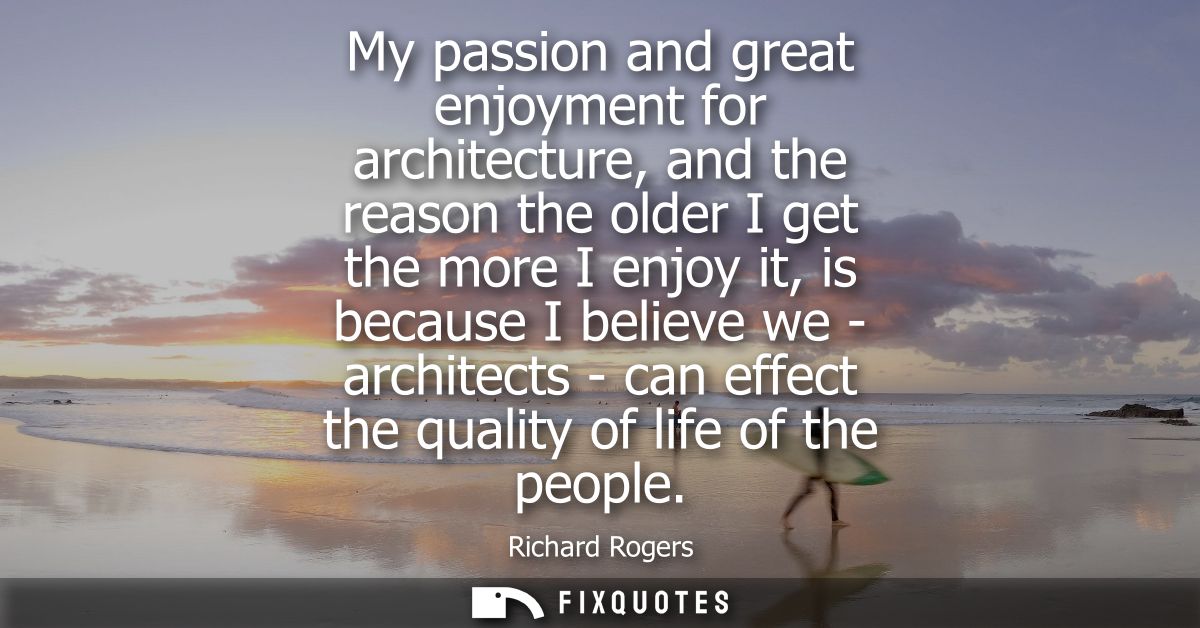"My passion and great enjoyment for architecture, and the reason the older I get the more I enjoy it, is because I believe we - architects - can effect the quality of life of the people"
About this Quote
Rogers links the deepening of passion to a growing recognition of agency. With time, an architect witnesses buildings being lived in, streets filling and emptying, plazas hosting protests and picnics, and homes accommodating whole lifetimes. That accumulation of evidence turns design from an exercise in taste into an instrument with tangible consequences. His choice of “effect” evokes not mere influence but the power to bring about change, architecture as a catalyst for better everyday living.
Quality of life is built from thousands of small decisions. Window height determines how morning light meets a desk and whether someone feels seen or exposed. The width of a sidewalk sets the tone for conversation, strollers, wheelchairs, and serendipity. A bench placed in shade invites rest; clear sightlines foster safety; intuitive circulation reduces stress. Mixed uses add life to streets after office hours; generous stairs encourage movement; proximity to transit expands opportunity. These are not aesthetic afterthoughts but mechanisms of dignity, health, and belonging.
Experience also reveals the long arc of outcomes. Post-occupancy feedback tempers hubris; delight or frustration voiced years later teaches what drawings cannot. The work becomes collaborative civic practice: aligning public policy, engineering, landscape, and community knowledge to shape equitable access to space. The architect’s role is less auteur than steward, synthesizing constraints into places that serve varied lives.
Ethics heighten the joy. Designing for climate resilience, affordability, inclusive access, and cultural continuity turns creativity toward problems that matter. Aging clarifies consequences: materials endure, maintenance budgets strain, floods recur, and children grow up within what we leave behind. The satisfaction comes from usefulness that lasts.
Rogers affirms that architecture’s true reward is its lived ripple effect. The measure is not the photograph on opening day, but the ease, safety, beauty, and connection people experience for decades. To design with that responsibility is to find ever-greater purpose in the work.
More details
About the Author

